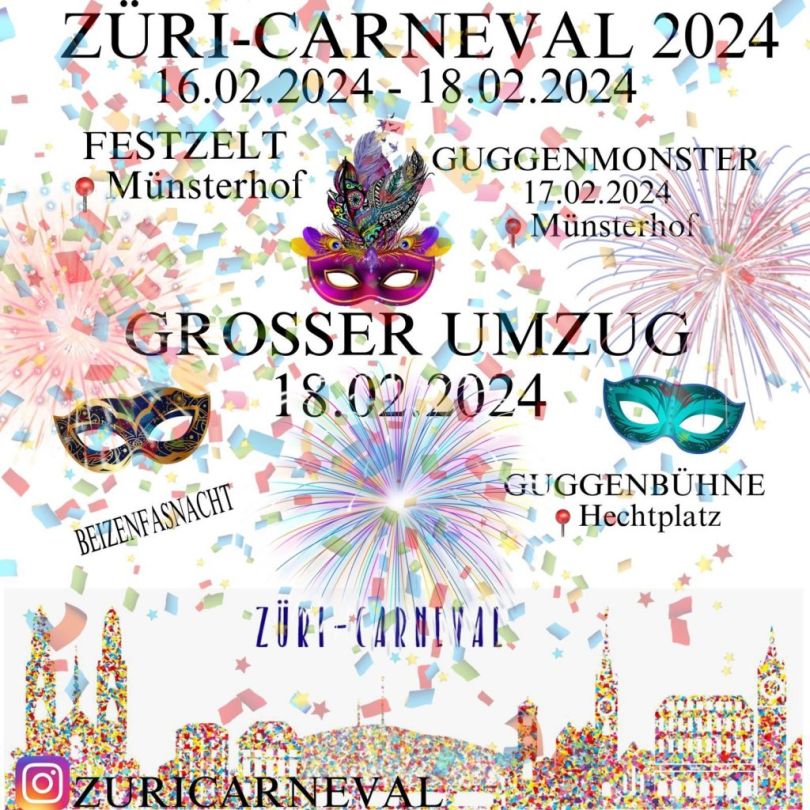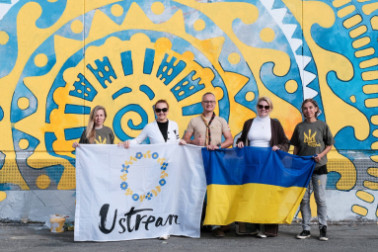However, not all cantons follow the tradition. For example, the most famous and magnificent Basel Carnival begins on Ash Wednesday, which in 2024 falls on February 19, and in some regions the festival takes place as late as May. However, February is considered the most carnival-like month.
The tradition of Fasnacht dates back to pre-Christian times, though in this context, the practice of medieval carnivals is more often mentioned, when the Church allowed people much more freedom than usual. It was a kind of period of frenzy, celebration of earthly life, and joy before Lent, a long period of restrictions and repentance.
Nowadays, Carnival in Switzerland is a secular celebration of unity and involvement. Participants in the procession in masks and carnival costumes and spectators, music bands and non-professional singers singing traditional songs together, a procession with colorful homemade lanterns and theatrical scenes — all together form a colorful, seemingly chaotic, yet incredibly harmonious picture of the holiday.
Fasnacht in Basel
The Basel Carnival is the largest and most famous in Switzerland. Since 2017, it has been included in the UNESCO Intangible Cultural Heritage List.
It is an amazingly spectacular holiday.
It starts from Marktplatz at 04.00 am, when all the lights go out and colorful lights flow through the streets like streams after 4 strokes of the local church bell. Those lights are the locals walking around with homemade lanterns of various shapes and colors.
The musical program begins with Morgestraich, a traditional archaic marching tune that is performed only during Carnival.
Then the participants of the procession appear dressed in carnival costumes and masks. Interestingly, only members of the so-called “Clique”— carnival music unions whose leaders apply in advance for participation, and all members of the group carefully prepare for the performance.
The carnival lasts three days, and there is something interesting happening every day. More than a hundred music groups perform in various squares of the city, balls, and children's parties are held. Bars and cafés are open for 72 hours of the carnival.
Flute players, drummers, and other musicians, as well as singers, walk around the city and entertain everyone who comes across them. The whole city is in full swing and inspiring.
Lucerne Carnival
Here, Fasnacht begins on Maundy Thursday and ends on Ash Wednesday — this year on February 8-13.
The city wakes up to an unusually loud explosion of sounds — this is how the Morgenwacht carnival calls residents at 5 am, a kind of salute from dozens of brass bands.
Then Guggenmusik, a joyful cacophony of songs that sound in a characteristic ungainly manner, breaks the silence of the city. And in a moment, people in fancy costumes are walking through the streets and alleys, coloring the gray cityscape.
The culmination of Lucerne's Fasnacht is on Tuesday, when an incredible procession of lights accompanied by the Guggenmusiken orchestra playing traditional music takes place.
Carnival in Bern
The third-largest carnival in Switzerland. The fun begins on Maundy Thursday, when the bear in the Prison Tower in Bern's Old Town wakes up from a long winter's sleep to a loud drumbeat.
During the three days of the Bernese Carnival, bands play, and just like in other cities, people in masks and costumes fill the streets and alleys, cafés and bars. You can also visit the circus on Thursday, the children's carnival on Friday, and various concerts and theater performances on Saturday.
 Fasnacht in Zurich
Fasnacht in Zurich
Held from February 16 to 18.
A special feature of this carnival is the “Ship of Fools”, which sets sail on the strangest boat trip of the year on Lake Zurich. Throughout the weekend, Guggenmusik orchestras play on Munsterhof and Hirschenplatz squares, where children are happy to come.
The culmination of the festival is a huge parade of lovers, which is getting bigger and bigger every year.
Brandons de Payerne
The Payerne Carnival is the most popular Swiss carnival in the French-speaking part of Switzerland. Here it is called “Brandon”. The stormy street festivities are very similar to all the others, but of course, they have their own special charm and many peculiarities.
For example, children here have their own parade, and adults are offered a raft ride and a night procession around 10:00 pm.






